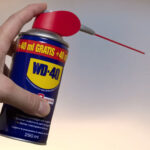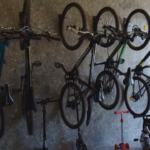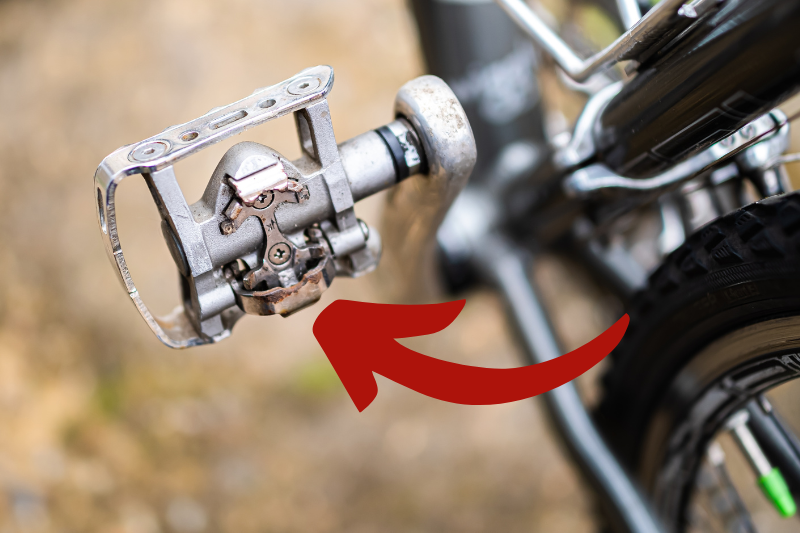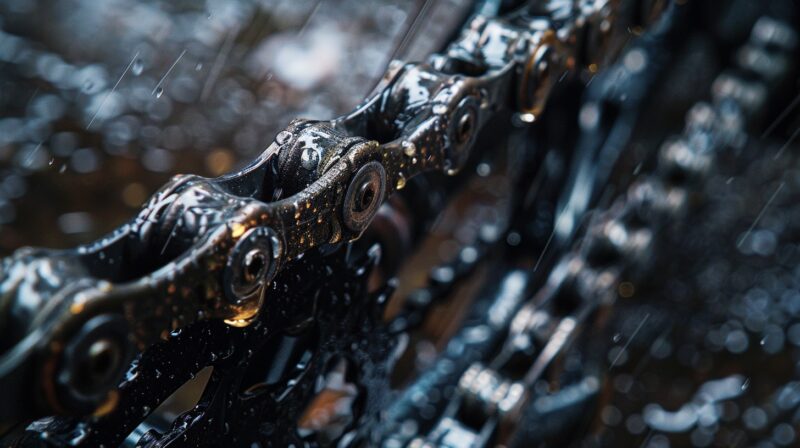
Anyone who rides a bike knows that the most frustrating thing is when your chain pops off. It’s hard to put it back in place while you’re on the move, and you get dirty doing it. With a little knowledge and regular maintenance, you will prevent bike chain popping.
Today we will talk about how to prevent the chain from breaking. Let’s go.
The first practical chain-driven bicycle, called the “safety bicycle,” was developed in the late 1800s.
How Should You Do It?
A standard bike chain can have anywhere from 110 to 126 links, depending on the type of bike. If you were to stretch out a typical bike chain, it would be around 52 inches (about 4.3 feet) long!
Bike chains popping off is a common issue that can disrupt your ride and cause inconvenience. Fortunately, there are several strategies and adjustments you can make to prevent this problem. Here’s a guide on how to keep your bike chain in place and ensure a smoother ride.
The world record for the fastest speed on a bicycle is over 183 mph, set by Denise Mueller-Korenek in 2018.
My bike chain is one of the most critical components of my bike. It connects the pedals to the rear wheel, transferring the power I generate with each pedal stroke to move the bike forward.
When my chain isn’t working properly, my bike won’t either. Therefore, you must understand how it works and why it might be causing problems. A well-maintained chain fits snugly on the gears of my bike, smoothly transitioning from one gear to the next.
When a chain pops off, it typically indicates an underlying issue that needs to be addressed. This can range from improper chain tension, and misaligned gears, to worn-out parts.
Bike chains popping off is a common issue that can disrupt your ride and cause inconvenience. Fortunately, there are several strategies and adjustments you can make to prevent this problem. Here’s a guide on how to keep your bike chain in place and ensure a smoother ride.
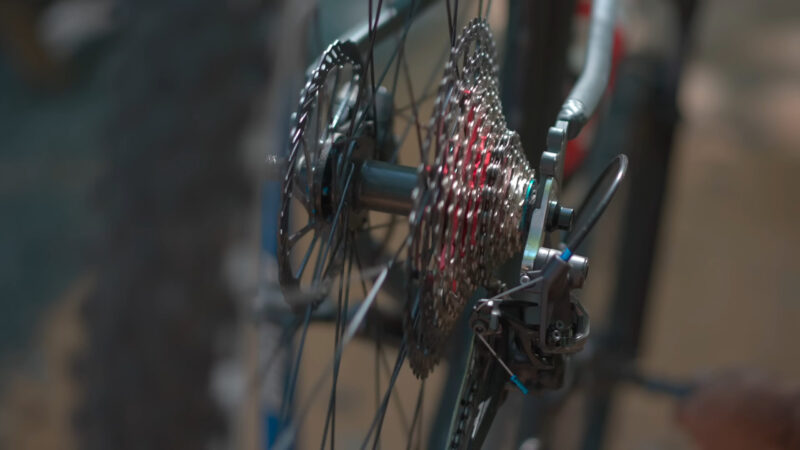
Causes of a Popping Bike Chain
For cyclists who want to add a bit of bling to their ride, some companies make gold-plated bike chains. These chains not only look cool but are also rust-resistant, making them both stylish and functional.
There are several reasons why your bike chain might be popping off. Each of these issues can be resolved with some basic maintenance or adjustments:
- Improper Chain Tension: If your chain is too loose, it can slip off the gears. Conversely, if it’s too tight, it can cause excessive wear and stress on the components.
- Worn-Out Chain or Sprockets: Over time, the metal of the chain and gears can wear down, making it easier for the chain to slip off.
- Misaligned Derailleur: The derailleur is the part of your bike that moves the chain from one gear to another. Your chain might not sit properly on the gears if it’s out of alignment.
- Dirty or Poorly Lubricated Chain: A chain that’s clogged with dirt or poorly lubricated can struggle to grip the gears properly, causing it to pop off.
- Loose Screws/Bolts on Drivetrain: If any screws or bolts on your drivetrain are loose, it can lead to the chain falling off. Regularly check and tighten any loose components on your bike.
Check Chainring and Derailleur Alignment
The average bike chain lasts about 2,000 to 3,000 miles. For some perspective, that’s like riding across the entire United StateWs!
Proper chainring and derailleur alignment is crucial in preventing your bike chain from popping. Misalignment can lead to your chain slipping off easily.
- Proper Chainring Alignment: Ensure the chainring is perfectly aligned with the rest of your drivetrain. Misalignment can cause the chain to slip off the gears.
- Adjust the Front Derailleur: The front derailleur should have a minimal gap between its outer plate and the outer chainring, ideally a 1-2mm gap. Adjust the derailleur’s height and angle to achieve this. This adjustment ensures the chain moves smoothly between gears without slipping.
Adjust Limit Screws
Setting the limit screws on your derailleur correctly is vital to prevent your chain from overshooting the chainring and dropping.
- Set Limit Screws Correctly: The ‘H’ (high) and ‘L’ (low) limit screws on your derailleur control the range of movement. Incorrect settings can cause the chain to overshoot the chainring, leading to a chain drop.
- Fine-Tune Adjustments: Start placing the chain on the largest chainring and the smallest rear cog. Adjust the ‘H’ screw so the chain aligns perfectly without shifting beyond. Repeat the process for the ‘L’ screw with the smallest chainring and largest rear cog.
Maintain Chain Tension
Proper chain tension is critical in ensuring your chain stays in place. A slack chain can easily slip off the gears, while a chain that’s too tight can cause undue stress.
- Proper Chain Tension: Ensure your chain has the right tension. You can adjust this by either removing a link or using a chain tensioner to maintain the appropriate tightness.
- Check for Stretching: Over time, chains stretch and need replacement. A worn-out chain can lead to frequent popping. Measure your chain regularly and replace it if it’s stretched beyond the recommended limit.
Clean and Lubricate Your Chain
Some cyclists use ultrasonic cleaners to clean their bike chains. These devices use high-frequency sound waves to remove dirt and grime, leaving the chain sparkling clean without the need for harsh chemicals.
Regular cleaning and proper lubrication are essential in maintaining a smoothly running chain.
- Regular Cleaning: Dirt and debris can cause the chain to stick and eventually pop off. Clean your chain regularly with a suitable degreaser to keep it free from gunk and grime.
- Proper Lubrication: Use a quality bike chain lubricant to keep your chain running smoothly. Avoid over-lubrication as it can attract more dirt and cause additional issues.
Inspect Chain and Chainring Condition
Regular inspections of your chain and chainring can prevent unexpected problems on your rides.
- Check for Wear and Tear: Examine your chain and chainrings for signs of wear. Worn teeth or a stretched chain can cause slippage. Replace them if necessary to maintain a secure fit.
- Ensure Compatibility: Ensure that your chain and chainrings are compatible. Mismatched components can lead to poor performance and increased chances of chain popping.
Correct Gear Shifting Practices
Proper gear shifting is crucial to preventing your chain from popping off, especially under load.
- Avoid Cross-Chaining: Cross-chaining, where the chain is on opposite extremes of the chainring and cog, can cause undue stress and lead to chain popping. Aim for a straight chain line to minimize stress on the chain.
- Smooth Shifting: Shift gears smoothly and avoid shifting under heavy loads. This practice reduces stress on the chain and prevents popping.
Install Chain Guides or Bash Guards
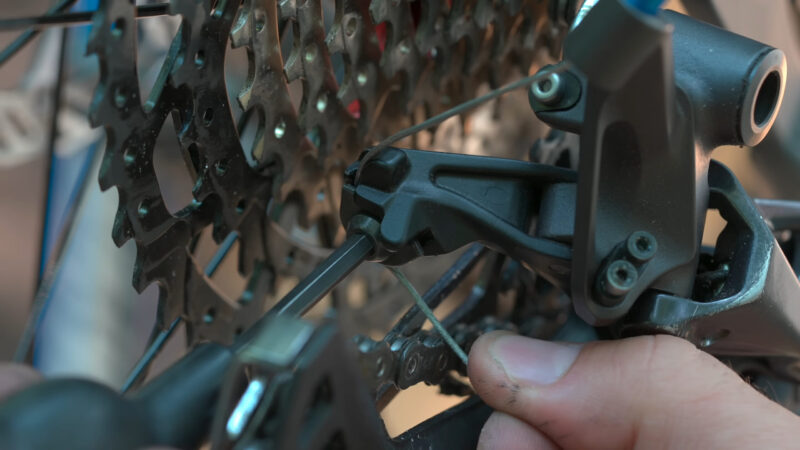
Installing additional components like chain guides or bash guards can help maintain the chain’s position.
- Chain Guide Installation: Consider installing a chain guide. It helps keep the chain aligned and prevents it from falling off, especially during rough rides or off-road cycling.
- Use Bash Guards: Bash guards can protect the chain and chainring from impacts and help maintain the chain’s position, especially if you ride in rugged terrain.
Regular Maintenance and Inspection
Routine checks and maintenance can help in catching potential issues early on, preventing bigger problems later.
- Routine Checks: Regularly inspect your bike’s drivetrain for any issues. Early detection of potential problems can prevent chain popping and other mechanical failures.
- Professional Tune-Ups: Occasionally, take your bike to a professional for a tune-up. They can spot and fix issues that might not appear to you, ensuring your bike stays in top condition.
Why Professional Help Matters
Did you know that bike chains for single-speed bikes are different from those used on multi-speed bikes? Multi-speed chains are narrower to accommodate the closely spaced gears on a multi-speed bike.
While there are many things you can do yourself to maintain your bike chain, sometimes it’s best to seek professional help. A bike mechanic can provide a thorough inspection of your bike, identify any issues you might have missed, and offer more advanced repairs and adjustments.
Regular visits to a bike shop can also help you stay on top of any potential problems before they become serious. Professional mechanics have the tools and expertise to keep your bike in excellent condition and ensure that your chain stays firmly in place.
Cost of Professional Bike Chain Fix
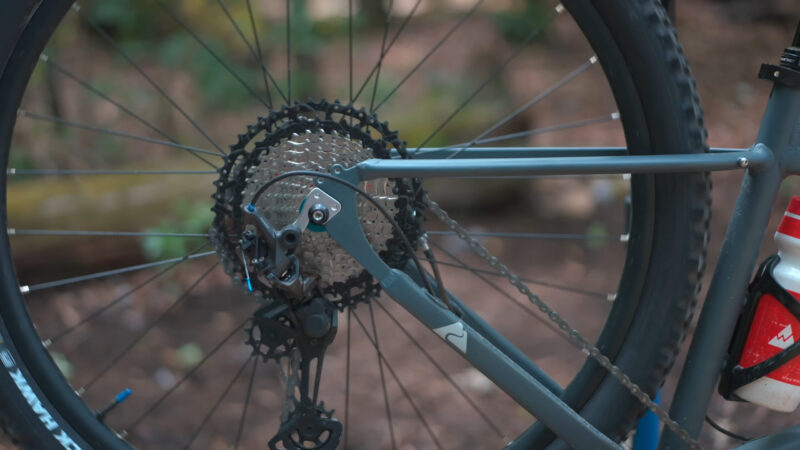
A bike chain transfers around 98% of the power you generate with each pedal stroke to the wheels, making it one of the most efficient power transfer systems in the world.
If you’re looking to have a professional fix your bike chain, the cost can vary depending on several factors including the type of bike, the extent of the problem, and the location of the repair shop.
Basic Chain Adjustment or Lubrication
For a simple adjustment or lubrication, costs are generally on the lower end:
- Price Range: $10 – $25
- Service Includes: Adjusting chain tension, cleaning, and lubricating the chain.
Chain Replacement
If your chain is worn out and needs replacing, the cost will include the price of the new chain and the labor:
- Price Range: $20 – $60
- Service Includes: Removing the old chain, installing a new chain, and adjusting it. The price can vary based on the quality of the chain.
Complex Repairs
For more complex repairs that may involve additional parts or more extensive labor, such as replacing the chain along with the cassette or chainrings, the cost can increase:
- Price Range: $50 – $100+
- Service Includes: Replacing the chain, possibly the cassette or chainrings, and making necessary adjustments to the drivetrain.
Full Drivetrain Overhaul
If your bike requires a complete overhaul of the drivetrain, which includes the chain, cassette, chainrings, and possibly the derailleur, the cost can be more substantial:
- Price Range: $100 – $200+
- Service Includes: Complete inspection, cleaning, and replacement of drivetrain components.
Additional Costs
- Premium Chains or Parts: High-end or specialty chains can cost more, with prices ranging from $30 to $100+ for the chain alone.
- Labor Costs: Labor rates can vary based on the bike shop’s location and expertise. Expect to pay anywhere from $20 to $50 per hour for labor.
- Additional Parts: If other parts need replacing, such as the cassette or chainrings, this will add to the overall cost.
Factors Affecting the Cost

- Bike Type: Road bikes, mountain bikes, and e-bikes may have different costs due to the complexity and type of parts used.
- Location: Costs can vary widely by region. Urban areas or regions with higher living costs typically charge more for repairs.
- Quality of Parts: Higher quality or specialized parts will increase the overall cost.
Tips to Save Money
- Regular Maintenance: Regular cleaning and lubrication can extend the life of your chain and reduce the need for frequent replacements.
- DIY Minor Repairs: Learning to do basic maintenance like cleaning and lubricating your chain can save you money in the long run.
- Shop Around: Get quotes from different bike shops to find the best deal, but ensure you’re not compromising on quality.
Benefits of a Well-Maintained Chain
Keeping your bike chain in good condition has several benefits beyond just preventing it from popping off:
- Improved Performance: A well-maintained chain ensures smoother and more efficient pedaling, making your rides more enjoyable.
- Extended Lifespan of Components: Regular maintenance reduces wear and tear on your chain and gears, extending the lifespan of these components.
- Safety: A properly functioning chain is crucial for safe riding. It reduces the risk of accidents caused by sudden chain failures.
- Cost Savings: Preventative maintenance is often cheaper than replacing worn-out parts. By taking care of your chain, you can avoid costly repairs in the future.
Conclusion
To prevent bike chain popping might seem like a small job, but it’s really important for having a smooth and safe ride. By cleaning, oiling, and adjusting your chain regularly, you can keep it in great shape and stop it from coming off.
Knowing why chains pop off and how to fix them can save you a lot of frustration while biking. If you make a habit of maintaining your chain, you’ll find biking more enjoyable and less stressful.
And if you’re ever unsure about how to do it, don’t be afraid to ask for help at a bike shop. They can make sure your bike is working properly so you can just focus on having fun on your rides! Keeping your chain in good condition may seem minor, but it makes a big difference in your overall biking experience.
A little bit of maintenance goes a long way. So take the time to care for your chain, and you’ll be rewarded with smoother, safer rides.
Related Posts:
- Can You Use WD40 on a Bike Chain (What to Know First)
- Why Does My Bike Tire Keep Popping? (And How to Fix It)
- Can You Put Pegs On A Mountain Bike? Step By Step Explained
- Can You Put Drop Bars on Any Bike? (Hybrid, Mountain, Etc.)
- Can Bike Tires Go Flat Just From Sitting Unused? (Explained)
- Can BMX Bikes Go Off-Roading or on Trails?






